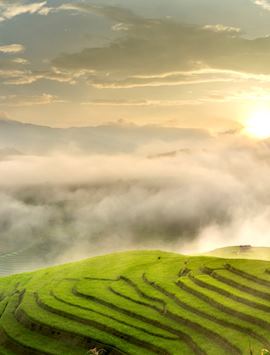On an overland journey from Vietnam, you can pass from the bright, lantern-lit streets of Hanoi into the remote northern reaches of Laos. Cunningly combine a few flights in South America and you can peer from the lofty heights of Machu Picchu, ramble along Spanish colonial plazas, and spot marine iguanas in the Galapagos — all in a two-week trip.
Choosing a single country to visit can be a challenge, so we’ve highlighted some trips which cross borders for a dynamic combination of experiences, cultures, and landscapes.
South Africa and Victoria Falls (Zambia)
How many passport stamps? Two (three if crossing the falls into Zimbabwe)
Landing in Cape Town, prepare to explore the city and striking coastal scenery of the Cape Peninsula on a private tour shaped entirely around your interests. You could also stretch your legs on a hike up Table Mountain with a local guide. Flying to the opposite side of the country, spend a few days spotting the Big Five in Sabi Sands Game Reserve — a private reserve within Kruger National Park.
You then fly on to Livingstone, Zambia. You might hear the roar of Victoria Falls before you see it. The Kaza visa covers you for entry into both Zimbabwe and Zambia, opening up both sides of the falls. Altogether, the trip should take around 13 days.
Trip highlights:
- Explore the Cape Peninsula with a specialist local guide who’ll take you away from the crowds and tell you more about the area’s wildlife and history. Visit Kalk bay to meet the resident seals, see the renowned African penguins at Boulders Beach, and take a scenic drive around Chapman’s Peak.
- Follow a lesser-known trail to Table Mountain’s summit. Along the way, your private guide points out flora and fauna, such as rock hyraxes and endemic fynbos vegetation, and describes what everyday life is like here.
- A safari in Sabi Sands Game Reserve gives you a good chance of seeing all of the Big Five. Being on a private reserve means wildlife drives can continue after dark as you look for nocturnal species. Meanwhile, guided bush walks focus on the ecosystem’s smaller species and plant life — keep your eyes to the ground as you look for animal tracks.
- You can feel the power of Victoria Falls simply by standing close to it. But you can also take in Mosi-oa-Tunya (“the smoke that thunders”) by boat, helicopter, or microlight. Away from the falls, you can visit local villages, take a sunset cruise along the Zambezi River, looking out for birds such as Pel’s fishing owls and half-collared kingfishers, or explore Livingstone’s markets with a guide.
Tailor this trip
While at Victoria Falls, you could spend an evening dining aboard the Royal Livingstone Express — a restored 1920s steam train that runs past the falls along part of the “Cape to Cairo” railway.
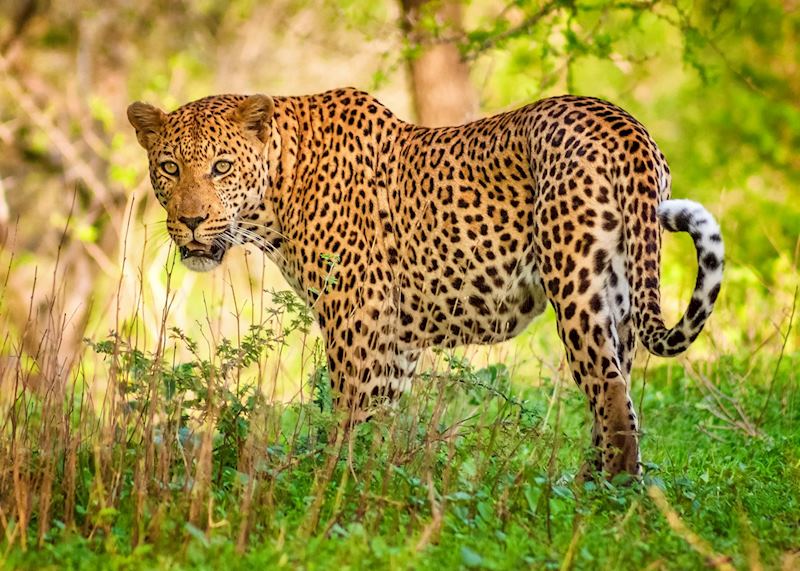
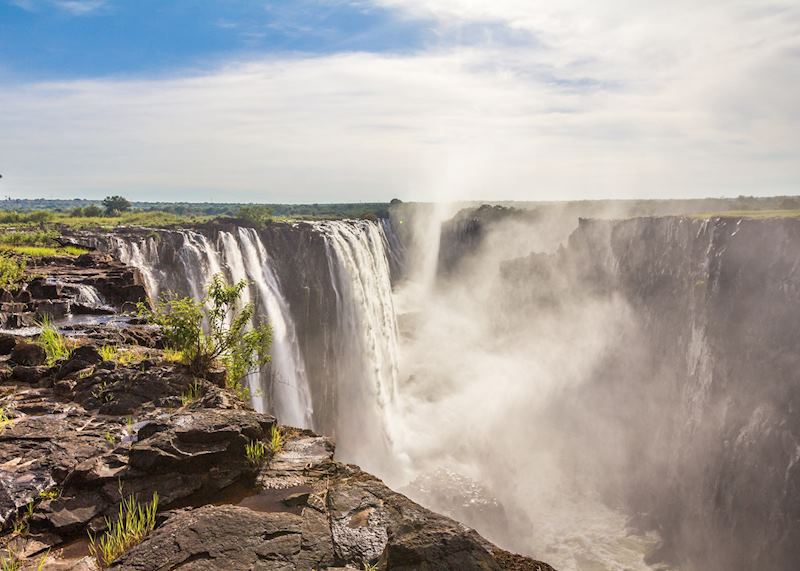
Bequia, St Vincent, and the Grenadines
How many passport stamps? Three (Bequia is part of St Vincent and the Grenadines)
Island-hop across the southern Caribbean, starting off on the spice isle of Grenada, where mountainous scenery is scattered with fragrant nutmeg, cinnamon, and clove groves. Flying onward to Barbados, you’ll find a mix of lively bar-backed beaches and deserted coves, with an interior peppered with British-colonial plantation houses and vibrant botanic gardens.
This trip takes a leisurely two weeks, ending in Bequia for an extended beachside stay. A laid-back island that retains an old-school charm many of the more developed islands have lost, days here can be spent on often-deserted beaches or idling around the markets of village-y Port Elizabeth.
Trip highlights:
- One of the Caribbean’s least developed islands, Grenada’s interior has a ridge of mountains running north to south, their steep-sided valleys covered in teak forests, flowering shrubs, and frothy clumps of ferns. Grand Etang National Park and Forest Reserve is right in the middle of the island, laced with trails that range from 15-minute ambles to day-long hikes.
- Staying at the family-owned Little Arches hotel on Barbados’ south coast is an opportunity for a genuinely Bajan experience. Stroll down to the peaceful, sugar-fine Enterprise Beach or eat at Café Luna, the on-site restaurant whose pan-tropical fare draws diners from across the island. Stay on a Friday and you’re a short walk from Oistins lively fish fry where the community comes together to eat fresh-caught fish barbecued to a live-music soca beat.
- From Bequia, you can sail the gentle trade winds to Tobago Cays, a collection of five tiny, uninhabited islands surrounded by a horseshoe of coral. Spend the day snorkelling or diving alongside turtles, Caribbean spiny lobsters, and psychedelic parrot fish.
Tailor this trip
Swap Bequia for a luxurious private island experience on nearby Petit St Vincent. Its collection of villas and cottages is scattered across the bougainvillea-flowered landscape, with uninterrupted views of the Caribbean Sea.

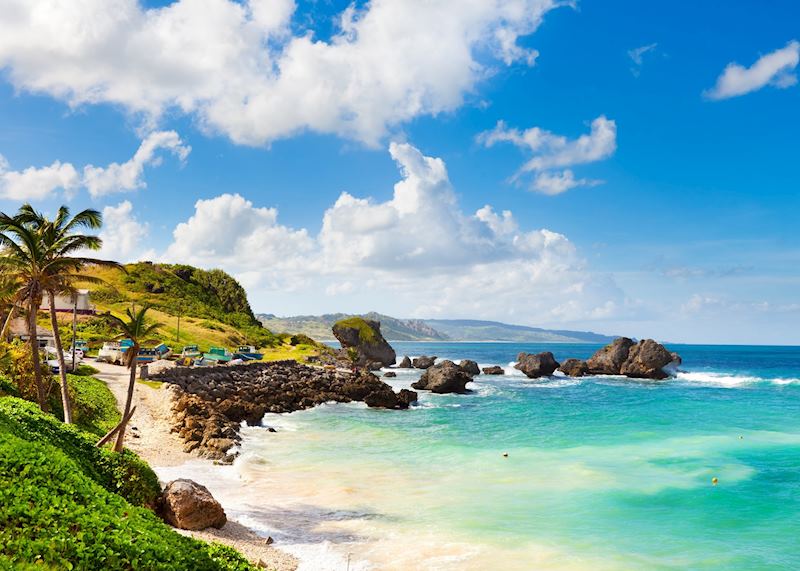
Northern Vietnam and Laos
How many passport stamps? Two
You’ll start off exploring Hanoi’s French-colonial architecture and tree-lined boulevards before escaping the buzz of motorbikes in provincial Mai Chau. Crossing the border into northern Laos, you’ll see remnants of the Second Indochina War (commonly known as the Vietnam War) in the Vieng Xai Caves.
Heading west through Laos’ wild frontier of jungle-covered limestone bluffs, you can paddle through national parks and hike to remote villages. From Nong Khiaw travel down to your final destination, Luang Prabang. Here you can walk through the town’s mosaic of gilded wats and colonial-era villas. The trip takes around two weeks.
Trip highlights:
- Hemmed in by hills, Mai Chau is a landscape of rice fields and tiny, stilted-house villages. Spend the day cycling along routes too narrow for a car to visit far-flung hamlets and textile-producing communities against the dramatic backdrop of the Tonkinese Alps.
- Kept a closely guarded secret until the late 1990s, the Vieng Xai caves were once the headquarters of the communist revolutionaries, Pathet Lao. You can now visit the complex of caverns — which includes an underground school, hospital, and chapel — accompanied by an audio guide recorded by the people who once lived there.
- The mountainous ravines of Nam Et-Phou Louey have been carved by the tributaries of the Nern River, which wind through thick jungle. You can spend the night in one of the park’s ranger stations, with a camp-fire dinner cooked by members of the local community. At dusk, paddle out in the darkness looking for deer coming to drink at the riverside, accompanied by nothing but the click of cicadas.
- Tucked into the bank of the Nam Ou River, we’re pretty confident that the petite town of Nong Khiaw is surrounded by some of Laos’ most spectacular scenery. Take a guided hike through the valley for views right across the limestone escarpments.
Tailor this trip
While in Mai Chau you can pay a visit to nearby Pu Luong Nature Reserve — an area of outstanding natural beauty with remote trekking routes through primary tropical forest.

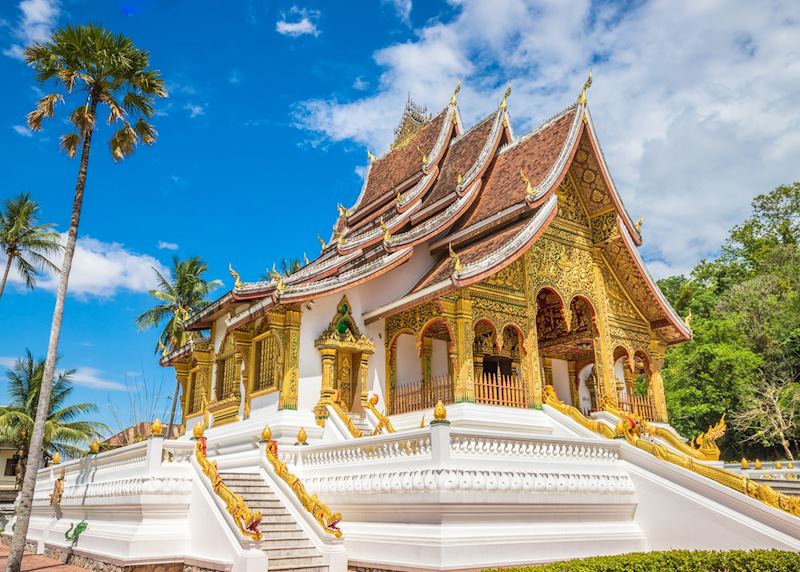
Peru and the Galapagos Islands (Ecuador)
How many passport stamps? Two (plus an unofficial, self-administered one from Machu Picchu)
Flying into Cuzco from Lima, you’ll dive head-first into Inca history in Cuzco, before taking the train to Machu Picchu via the Sacred Valley. This fertile, mountain-lined corridor is littered with the skeletons of yet more Inca citadels and terracing.
Then, retrace your steps to Lima for your connecting flight to Quito, spending a day exploring its colonial old town — a UNESCO World Heritage Site — before flying on to the Galapagos Islands. Here, you’ll embark on a multi-day expedition cruise led by expert naturalist guides. The entire trip takes a little over two weeks.
Trip highlights:
- Straddling a fault line between two cloudforest-cloaked peaks, we think Machu Picchu has the power to beguile no matter how familiar you are with its image. With your private guide, you’ll delve into this multi-layered granite maze, exploring the enigmas of Inca cosmology, their sophisticated irrigation systems, and precision-fitted, crazy-paving-style stonework.
- In the Sacred Valley, visit the warship-like, temple-come-fortress of Ollantaytambo, situated just where the valley becomes less agrarian and more subtropical, as well as the vortex-like terraces of Moray. Or, hike to the lofty ruins of Huchuy Qosqo — invisible from the valley floor.
- Quito has a raft of well-preserved Spanish colonial plazas, monasteries, and churches, but we also like its artisanal markets and boutiques selling polychromatic handicrafts and textiles.
- The Galapagos could see you following trails over volcanic terrain and red-sand beaches as you observe birdlife like red-pouched, piratical frigatebirds or blue-footed boobies up close. The islands’ dramatic personae also includes sea lions and marine iguanas. You could even watch giant tortoises amble around at a breeding project at the Charles Darwin Research Station.
Tailor this trip
Get an alternative view of the Sacred Valley and its archaeology by exploring its dirt roads and llama tracks by mountain bike — tours can be adapted to all abilities.

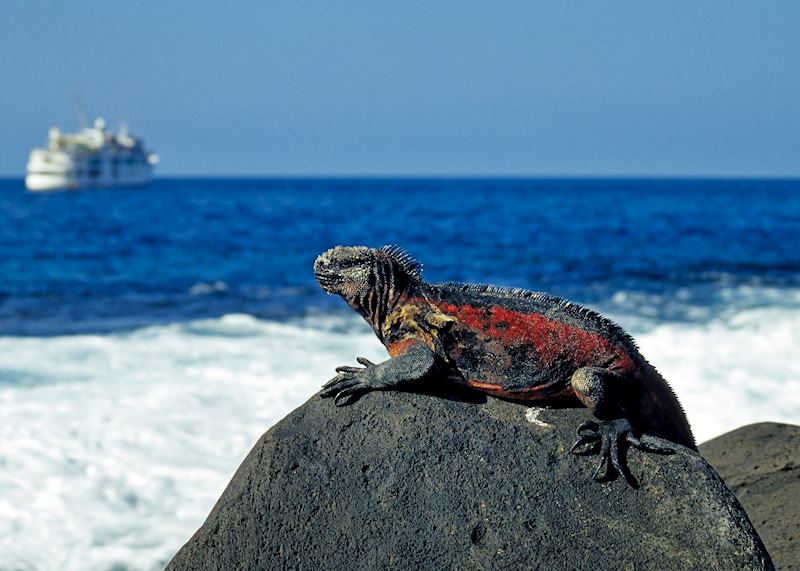
Multi-country trip ideas
Start thinking about your experience. These itineraries are simply suggestions for how you could enjoy some of the same experiences as our specialists. They're just for inspiration, because your trip will be created around your particular tastes.

